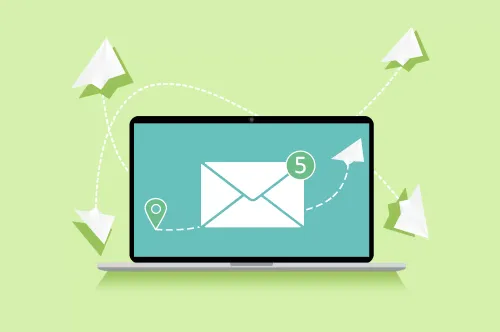In today's digital landscape, email communication plays a crucial role in sales and marketing strategies. As a Salesforce user, it's essential to have a comprehensive understanding of the platform's features and capabilities. One such feature is the Salesforce Email Bounced Field, which provides valuable insights into the deliverability of your email communications. In this article, we'll delve into the importance of the Salesforce Email Bounced Field and how it can significantly impact your sales efforts.
Why Is the Salesforce Email Bounced Field Important?

The Salesforce Email Bounced Field is a critical component of email deliverability management within the Salesforce platform. It serves as an indicator of whether an email sent from Salesforce has bounced or failed to reach its intended recipient. Here are some reasons why the Salesforce Email Bounced Field is of utmost importance:
- Email Deliverability Insights: The Email Bounced Field provides valuable information about the deliverability of your emails. By monitoring this field, you can gain insights into the percentage of bounced emails and take necessary actions to improve your email deliverability rates.
- Data Quality Improvement: Bounced emails often indicate issues with the accuracy of your contact or lead data. By identifying bounced emails and analyzing the reasons behind them, you can pinpoint and rectify incorrect or outdated email addresses, ensuring your database remains clean and up to date.
- Sales Performance Optimization: Understanding the bounce rate of your emails helps you identify potential gaps in your sales processes. It allows you to refine your targeting strategies, improve engagement, and increase the effectiveness of your sales outreach efforts.
- Automation and Workflows: The Email Bounced Field can be leveraged within Salesforce workflows and automation processes. By utilizing this field, you can trigger actions or alerts based on bounced email events, ensuring timely follow-ups and proactive customer engagement.
Enabling the Salesforce Email Bounced Field
Enabling the Salesforce Email Bounced Field is a crucial step in harnessing its power. Here's how you can enable this feature:
- Access the Salesforce setup menu and navigate to the "Email" settings.
- Enable "Bounce Management" to activate the Email Bounced Field functionality.
- Configure the bounce handling options according to your preferences and business requirements.
- Customize the field mappings to ensure that the Email Bounced Field is visible and accessible in your Salesforce objects and reports.
- Save the settings and start capturing data on email bounces within your Salesforce org.
By following these steps, you can unlock the full potential of the Salesforce Email Bounced Field and begin harnessing its benefits.

Frequently Asked Questions (FAQs)
Here are some commonly asked questions about the Salesforce Email Bounced Field:
1. How can the Salesforce Email Bounced Field help improve my email deliverability?
The Salesforce Email Bounced Field provides visibility into bounced emails, allowing you to identify patterns and trends that may affect your email deliverability. By analyzing bounce reasons and taking appropriate actions, such as updating contact information or removing invalid addresses, you can enhance your email deliverability rates and increase the chances of your messages reaching the intended recipients.
2. Can the Salesforce Email Bounced Field be accessed and utilized in reports and dashboards?
Yes, the Salesforce Email Bounced Field can be included in reports and dashboards to track and analyze email bounce data. By creating custom reports or adding the field to existing reports and dashboards, you can gain actionable insights into the impact of bounced emails on your overall sales performance and make informed data-driven decisions.
3. How can I automate processes based on the Salesforce Email Bounced Field?
The Salesforce Email Bounced Field can be incorporated into workflows and automation processes. By setting up workflow rules or process builder flows, you can trigger actions based on bounced email events. For example, you can automate follow-up tasks, assign tasks to specific team members, or initiate re-engagement campaigns for contacts with high bounce rates.
4. Are there any limitations or considerations when using the Salesforce Email Bounced Field?
While the Salesforce Email Bounced Field is a powerful tool, it's important to note that it relies on the accuracy and completeness of bounce data provided by your email service provider. Ensure that your email provider is configured to report bounce events correctly, and periodically review the field mappings and integration settings to maintain seamless data flow between Salesforce and your email platform.
5. Can I customize the Salesforce Email Bounced Field according to my specific requirements?
Yes, the Salesforce Email Bounced Field can be customized to align with your unique business needs. You can configure field mappings, create custom formulas or validation rules, and even build automation processes around the field to enhance its functionality. Salesforce provides flexibility for customization, allowing you to tailor the Email Bounced Field to best serve your sales and marketing objectives.
Conclusion
By leveraging the power of the Salesforce Email Bounced Field, you can gain valuable insights into email deliverability, improve data quality, and optimize your sales strategies. Enable this feature within your Salesforce org and unlock a world of possibilities to enhance your email communications and drive sales success.



